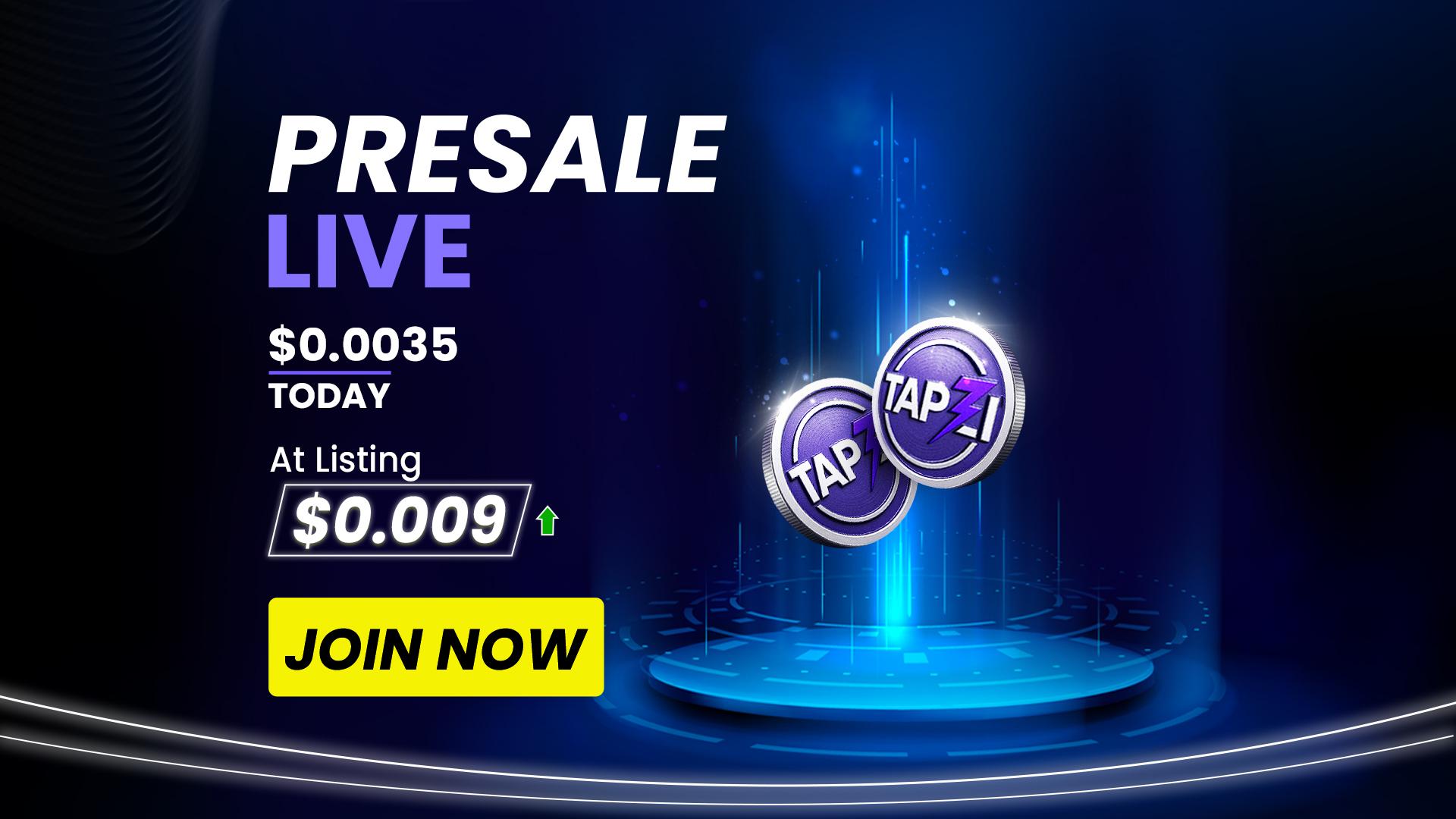As corporate treasuries increasingly look beyond Bitcoin, Ethereum is emerging as a new favorite for its dual value of price appreciation and staking rewards.
A recent Reuters analysis found that companies now hold over 966,000 ether tokens on their balance sheets, up from just 116,000 at the end of 2024. With staking yields offering 3–4% and Ethereum powering decentralized finance (DeFi) infrastructure, firms like Bit Digital and GameSquare are betting big, and some even raising capital just to accumulate more ETH.
However, with Ethereum trading well above $3,000, its affordability is slipping out of reach for everyday investors hoping to enter early and grow with the ecosystem.
That’s where low-cap, under-$1 altcoins come in, assets that may lack Ethereum’s current stature but offer a similar blend of practical utility and early-stage upside. In the post-ETF landscape, where blue-chip tokens are becoming institutional playgrounds, retail investors with limited capital are turning toward newer, mission-driven projects.
One of the most talked-about among them is Tapzi, a blockchain gaming platform building an economy around real-time PvP skill matches. Its under-the-radar presale phase, clear roadmap, and gameplay-first model place it in the sweet spot: affordable today, but fundamentally designed for long-term relevance.
Moreover, you can diversify your portfolio with the best cheap crypto to buy today. Let’s check the details of the top five such valuable coins for the long term.
5 Best Cheap Crypto to Buy Today To Build Generational Wealth in 2025
The following is a list of the best cheap crypto to buy now:
- Tapzi (TAPZI)
- BlockDAG (BDAG)
- Bitcoin Bull (BTCBULL)
- Best Wallet (BEST)
- Lightchain AI (LCAI)
- Cardano (ADA)
- Ondo (ONDO)
Various reasons make them steal the deal offer, and let’s check the details of the best cheap crypto to buy today.
1. Tapzi (TAPZI)
Tapzi is an emerging Web3 gaming protocol aiming to deliver skill-based multiplayer experiences through blockchain. At a time when high-cap cryptocurrencies like Ethereum are becoming less accessible to retail investors with small budgets, Tapzi presents an alternative for those seeking low-entry tokens tied to real use cases.
The platform is structured around competitive PvP games such as chess and rock-paper-scissors, with gameplay mechanics designed to reward skill rather than speculation or idle farming. This model addresses a major flaw in most “play-to-earn” games, which often inflate token supplies and dilute value over time.
Click Here to Join the $TAPZI Presale Before It’s Too Late!
Tapzi’s phased roadmap reflects a long-term development plan. The third quarter of 2025 marks the presale stage, supported by a game demo, whitepaper release, and smart contract audits. These steps are intended to build initial credibility and user engagement.
By the fourth quarter, Tapzi aims to go live with its token listing, platform beta, and a global tournament to begin player onboarding.
Later stages will introduce NFT-based cosmetic upgrades, developer toolkits, and cross-chain expansion, indicating a broader infrastructure vision beyond gaming.
The TAPZI token will underpin key functions such as staking, tournament entry, and cosmetic purchases. With planned support for over 100,000 daily users and SDKs for third-party developers, the platform is structured for scale.
For investors with only $50 to spend, Tapzi represents a low-cost entry into an ecosystem still in early development but anchored in long-term utility.
2. BlockDAG (BDAG)
BlockDAG is an emerging layer-1 blockchain that reimagines the limitations of traditional chain-based consensus systems.
Unlike blockchains that build one block at a time, BlockDAG enables multiple blocks to be confirmed simultaneously, drastically increasing speed and scalability. This structure allows transactions to be processed in parallel, thus offering potential for hundreds of thousands of transactions per second.
For under $1, BDAG is especially appealing to early investors seeking long-term value in infrastructure-focused projects. Its roadmap includes the launch of a testnet, a decentralized app ecosystem, and community-driven governance.
With low entry costs and ambitious scalability, BlockDAG positions itself as a foundational layer for the next generation of blockchain applications.
3. Bitcoin Bull (BTCBULL)
Bitcoin Bull is a bold new project designed to offer leveraged exposure to Bitcoin’s price action in a decentralized form. Unlike centralized leverage products, BTCBULL uses smart contracts to simulate long exposure, making it accessible without relying on traditional exchanges.
The token is gaining popularity among retail traders who want to amplify potential gains with smaller capital. With a capped supply and staking mechanisms to stabilize its tokenomics, BTCBULL is built for both short-term speculation and long-term participation.
For those with limited capital, BTCBULL represents a high-risk, high-reward opportunity that’s tightly linked to the broader movement of Bitcoin itself.
4. Best Wallet (BEST)
Best Wallet is not just another utility token; rather, it’s tied to a growing digital wallet ecosystem focused on user security, intuitive UX, and multichain compatibility. BEST powers in-app features such as fee discounts, priority support, staking rewards, and access to premium tools like portfolio analytics and DApp browsing.
With the wallet market heating up amid the rise of self-custody, BEST has quietly gained traction among early users who want more than just a wallet but a complete Web3 hub.
At a sub-dollar price point, BEST offers an affordable entry into the intersection of finance, utility, and user-focused innovation in crypto.
5. Lightchain AI (LCAI)
Lightchain AI is a fusion of artificial intelligence and blockchain infrastructure, designed to make Web3 systems smarter and faster. It focuses on AI-powered validators, predictive gas optimization, and decentralized machine learning.
The token is used to pay for AI model access, audit services, and smart contract testing, all of which are valuable for developers and enterprises building in Web3. While still early-stage, LCAI has tapped into one of the most promising tech intersections of the decade.
For just a small investment, LCAI could give exposure to the frontier of AI-integrated decentralized systems, hence potentially a massive disruptor in the coming years.
6. Cardano (ADA)
Cardano is a research-first, proof-of-stake blockchain known for its academic rigor and gradual, peer-reviewed development. While ADA has matured beyond early hype cycles, it remains one of the most affordable blue-chip cryptos in the market.
The network supports smart contracts, DeFi, NFTs, and scalable governance frameworks through its Hydra and Voltaire upgrades. For under $1, ADA gives you exposure to a reliable, energy-efficient blockchain backed by a strong community and long-term development vision.
With future use cases in identity, supply chains, and governance, Cardano continues to evolve as a trusted choice for investors building a diversified portfolio with modest capital.
7. Ondo (ONDO)
Ondo is gaining attention as a real-world asset (RWA) tokenization platform, connecting traditional finance with blockchain via tokenized treasuries and bonds.
Built on Ethereum, Ondo enables users to gain exposure to U.S. Treasury yields through DeFi protocols by bridging the gap between crypto-native liquidity and regulated financial products. ONDO token holders benefit from governance rights and future integrations, as the protocol scales its financial products across multiple chains.
As tokenization of RWAs becomes a major theme in 2025 and beyond, ONDO offers an affordable entry into a growing market expected to hit $30 trillion by 2030. For $50 or less, it’s one of the most grounded bets in today’s market.
Conclusion on the Best Cheap Crypto to Buy Today
As institutional investors increasingly dominate high-cap assets, small-scale retail participants are turning toward low-cost altcoins that still offer early-stage utility, real-world integration, and potential for exponential returns.
Projects like Cardano, Ondo, and BlockDAG reflect this shift by combining affordability with infrastructure-grade ambitions. However, not all affordable tokens are created equal, as some merely ride trends, while others build foundational ecosystems.
One standout example is Tapzi, which aligns utility, scalability, and smart contract-driven fairness in the Web3 gaming sector. For those entering the market with just $50, such utility-focused platforms may represent the most sustainable path to long-term value creation.
Disclaimer: This media platform provides the content of this article on an "as-is" basis, without any warranties or representations of any kind, express or implied. We assume no responsibility for any inaccuracies, errors, or omissions. We do not assume any responsibility or liability for the accuracy, content, images, videos, licenses, completeness, legality, or reliability of the information presented herein. Any concerns, complaints, or copyright issues related to this article should be directed to the content provider mentioned above.







